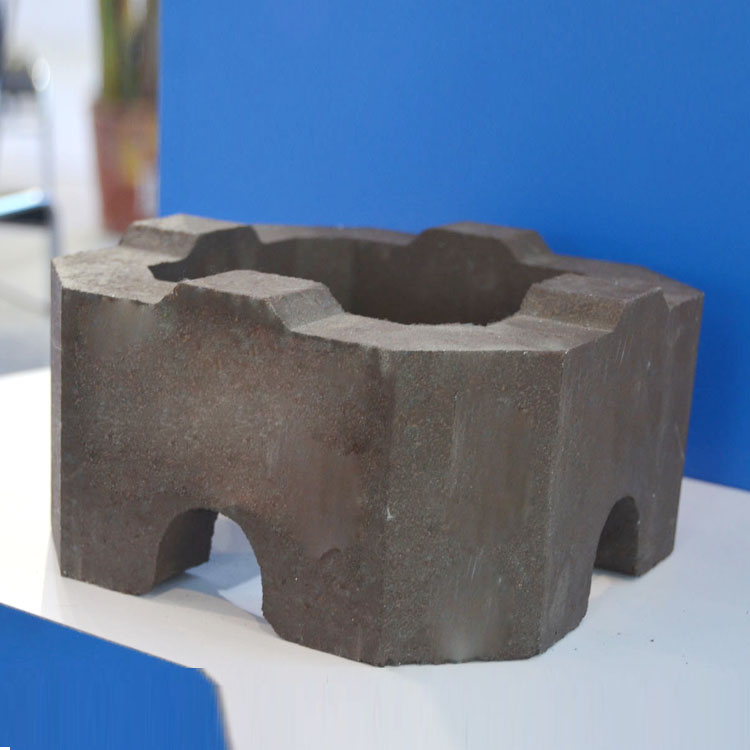.jpg?x-oss-process=image/resize,h_1000,m_lfit/format,webp)
In the global trend of environmental protection, the refractory materials industry has paid increasing attention to environmental issues. This article unveils the production of magnesia-carbon bricks, focusing on the technical knowledge of selecting environment-friendly raw materials. It covers the characteristics and advantages of raw materials such as magnesia and graphite with low environmental impact, the research, development and application of green binders, energy-saving firing processes, waste treatment and recycling, etc. Meanwhile, it elaborates on the role of this production process in enhancing the brand influence and market competitiveness of enterprises while ensuring the quality of magnesia-carbon bricks.
As the world becomes more environmentally conscious, the refractory materials industry, including magnesia-carbon brick production, is under pressure to adopt greener practices. Balancing high - quality production with environmental protection is not only a moral obligation but also a strategic necessity for enterprises. For example, in recent years, with the implementation of stricter environmental regulations, companies that fail to meet environmental standards face significant fines and reputational damage.
Traditional raw materials in magnesia-carbon brick production often have a relatively high environmental impact. In contrast, environment-friendly magnesia and graphite have several advantages. Environment-friendly magnesia is usually produced through more energy - efficient and less polluting processes. It has a higher purity, which can improve the performance of magnesia-carbon bricks. For instance, compared with traditional magnesia, the new - type magnesia can reduce the energy consumption in the production process by about 20%. Graphite used in green production is sourced from sustainable mines and has better thermal conductivity, which helps to enhance the heat - resistance of the bricks.
.jpg)
Green binders play a crucial role in reducing pollution emissions during the production of magnesia-carbon bricks. Traditional binders often contain harmful substances such as phenol and formaldehyde. The newly developed green binders are made from natural or recycled materials. For example, a certain type of green binder can reduce volatile organic compound (VOC) emissions by up to 80% compared to traditional binders, which not only protects the environment but also improves the working conditions for employees.
The principle of energy - saving firing processes is to optimize the heat transfer and combustion efficiency. By using advanced insulation materials and intelligent control systems, the energy consumption in the firing process can be significantly reduced. For example, a new - generation firing kiln can save about 30% of energy compared to the traditional ones. The process usually includes pre - heating the raw materials, precise temperature control during firing, and rapid cooling after firing.

Waste generated during magnesia-carbon brick production can be effectively treated and recycled. For example, waste bricks can be crushed and reused as raw materials for new bricks, which can save up to 15% of raw material costs. By establishing a complete waste management system, enterprises can not only reduce the environmental impact but also improve resource utilization efficiency.
To ensure the quality of magnesia - carbon bricks, enterprises need to implement strict quality control measures at every stage of production. This includes raw material inspection, process monitoring, and final product testing. For example, using advanced testing equipment such as X - ray diffraction and thermal analysis can accurately detect the physical and chemical properties of the bricks.
This production process can significantly enhance the brand influence and market competitiveness of enterprises. In today's market, more and more customers prefer green products. By producing environment - friendly magnesia - carbon bricks, enterprises can meet the market demand and gain a competitive edge. For example, a company that adopts this green production process has seen a 25% increase in market share in the past two years.
In conclusion, the production of magnesia - carbon bricks with environment - friendly raw materials and green processes is a sustainable development path. Enterprises that focus on environmental protection and quality in magnesia - carbon brick production can make their products more in line with the market demand for green products, thereby enhancing brand influence and market competitiveness. Looking forward, with the continuous advancement of technology, we expect to see more innovative solutions in this field. If you are interested in our green magnesia - carbon bricks and environmental protection concepts, please contact us now!


